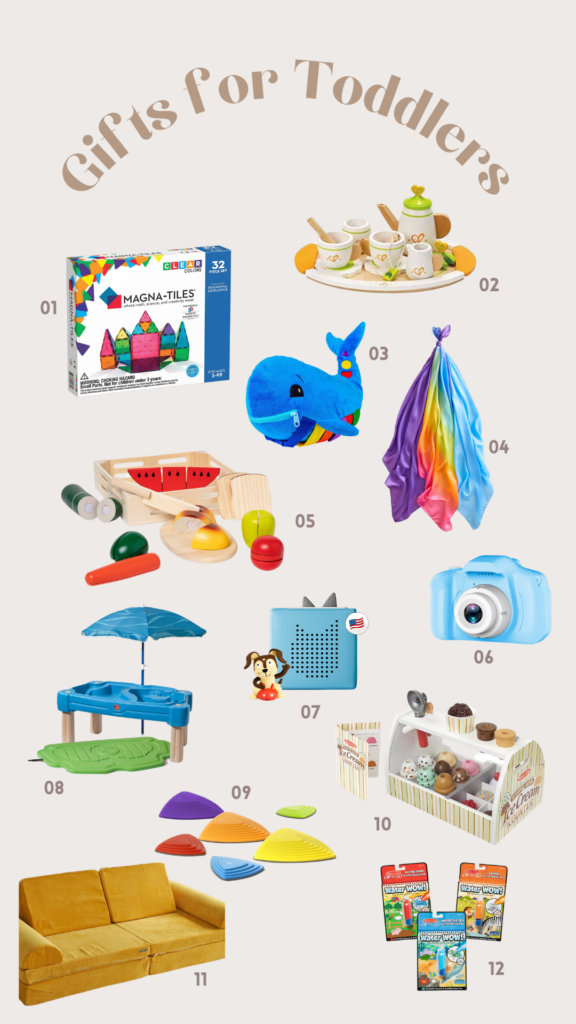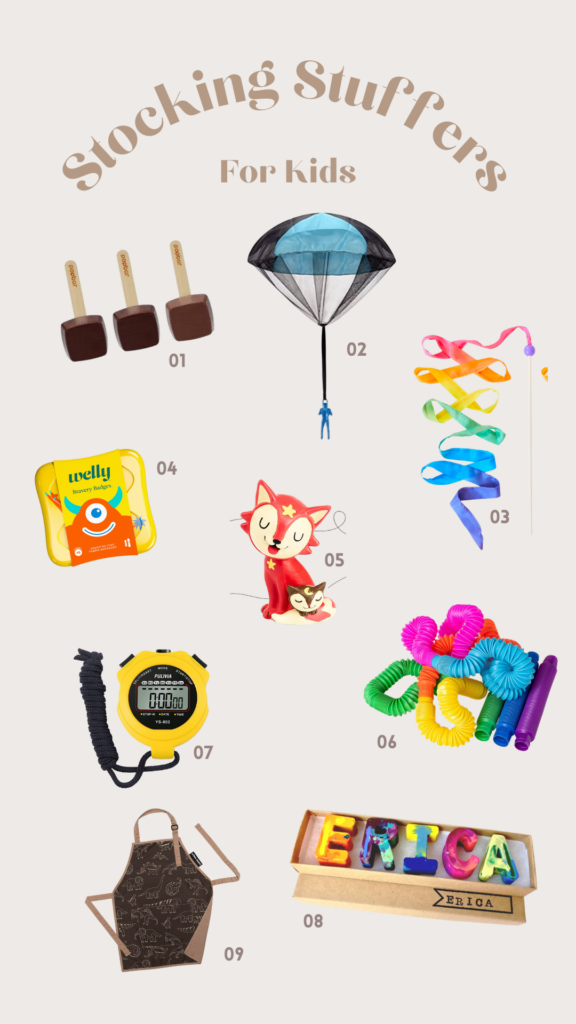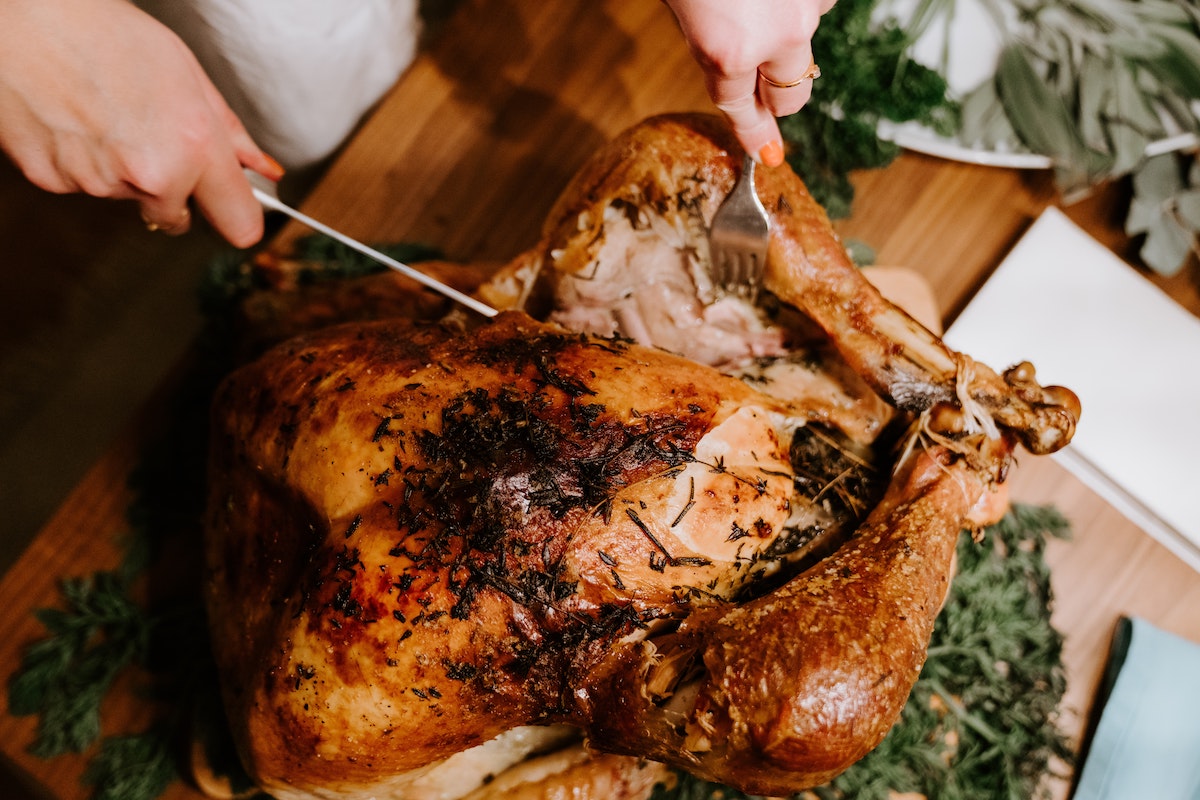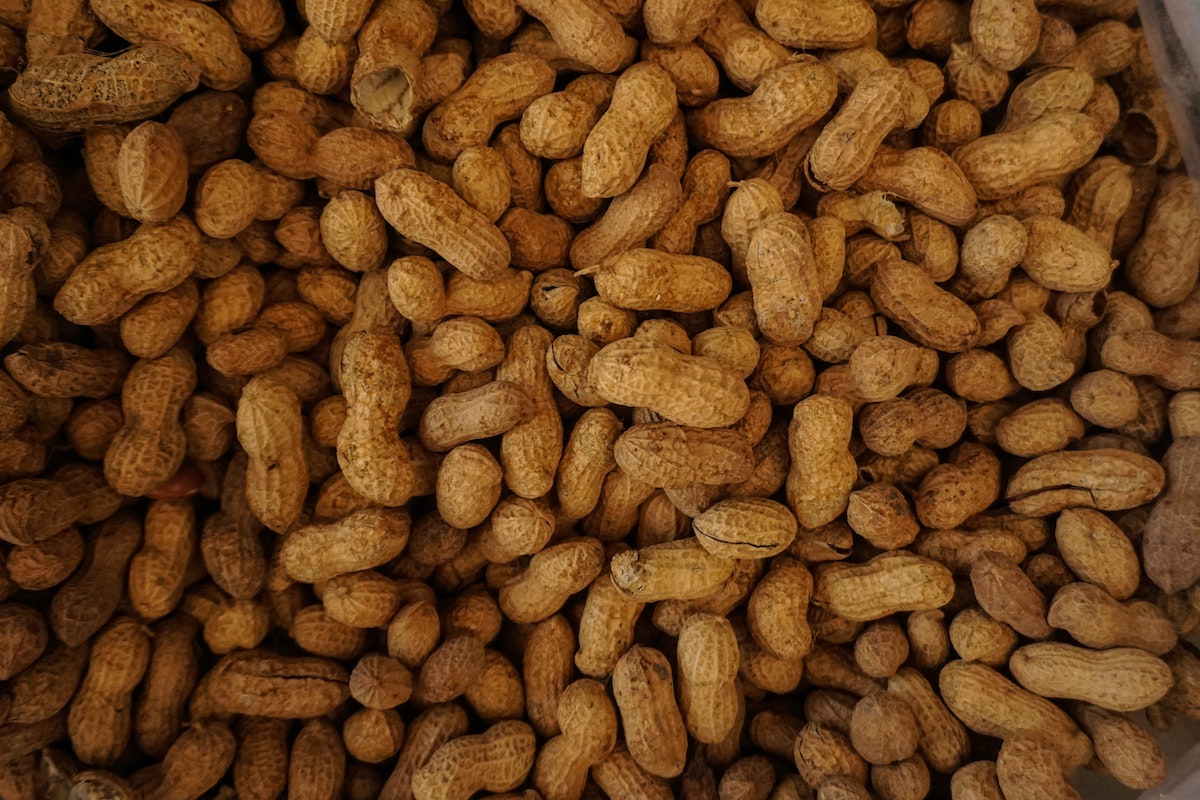How is Christmas almost here? I had plans to have alllll my Christmas shopping done before baby # 3 made their appearance and since I am within a week of my due date I can confidently say that probably won’t happen… but what I won’t let happen is not to get these gift guides to you!
I love gifting to people I love. I find it so fun to think of who they are, what they love, what they’re passionate about and find a gift that suits them well. I think gift guides can be amazing tools to use to be inspired and think of things out of the box!
I made it a goal of mine to include interesting, thoughtful and practical gifts on this guide to help you find the perfect fit. Most of these things we either own and love, have used and loved, or are on our list!
I’ve also included (at the bottom) so questions to ask to find the perfect gift for that person in your life you just can’t crack and some experience or “non-thing” items you could gift!
Alright that’s it from me let’s get to the guides!!!
For Baby:

- This magical box is equivalent to endless minutes of play time. My kids still love this thing years later. 2. This spinner stacker thing is on our list for baby this year! It’s so fun and mesmerizing and is something different than a normal stacker toy! 3. Touch and feel barn toy. Wow do my kids love this. Learning barnyard animals and noises, touching different textures, playing peek a boo it’s been such a fun toy in our home. A top fave for sure! 4. Pop it push toy. We don’t have this one but it’s beautiful and our kids have LOVED the poke-a-dot books with the same pop it feature so I’m sure it will be a hit! 5. Pop up people toy. We have the school bus one that’s been out of stock for months (possibly years!) but wow it’s always the most simple toys that are the most fun right? This one is a true winner and will stand the test of time! 6. Walker with added toys. We don’t have this exact one, but we have one very similar and it’s always been a fave! 7. Wobble penguin toy. This was a fave for both my kids for tummy time and figured it would be a good alternative from the one you’ll probably see on all other gift guides. This one has a sweet soft noise we love it! 8. What’s inside box. Babies can play with this for houuuuurs. So much fun and the texture is a great bonus. 9. The Mitten Board Book. This is a childhood fave of mine. Of course any winter/Christmas board book would be great but this one is a classic. 10. Suction cup spinner toys. I’ve seen these everywhere with RAVE reviews so we picked them up for baby three this year!
For Toddlers:

- Magnatiles. These will never not be on my list. Top toy in our home for sure. Always played with. Ages well with kids and just an overall great open ended toy! 2. Wooden tea set. We’ve been through a few tea sets. They’ve all been broken, dented, or simply deteriorated. This one has lasted so long. We love so many wooden food and drink sets but this one has been a hit in our home amongst many age ranges. 3. Buckle me whale stuffy. Such a great toy for eye hand coordination and fine motor skills. My kids love this one we also have this bear one which is fun because they can undress and dress him too. 4. Sarah’s Silk Scarves. These are great open ended toys. Also can get kinda pricey but I’ll tell you what they’re just better than the cheap alternatives. They last longer, kids prefer them and they really do get played with a TON. Juggling, peek a boo, capes, scarves, dress up, magic shows. All of the things. We love these. 5. Wooden play food. What did I tell you these wooden food sets are such a great option and the ones that velcro together and they can “cut” has kept my kids entertained for so long. Plus some exposure to foods too! 6. Play digital camera. We now have two of these, one for each kid. The creativity and excitement they feel when they take real live pictures and video is so sweet plus less taking 100000 photos on your phone and filling up your space. Plus you can save, download and print the photos too! 7. Tonie Box. I worked with this brand this year and was hesitant because I already had a similar product (linked later in this gift guide lol) and wasn’t convinced I’d love it but we do! It’s great for small kids/toddlers but ages well too! Plus the characters are so cute. If you’re new to these type of products it’s essentially a story teller slash podcast player that plays pre-recorded stories and songs for your kids and it’s screen free! Such a great gift! 8. Outdoor sand and water table. This is an updated version of ours and we love it. The kids spend hours of time playing with it! 9. Stepping stones. Our library has these and wow we can spend all day playing with them. Obstacle courses, color sequences, gymnastics, using them as buckets or playing floor is lava. We LOVE these. My goal is to get a set for home this year too! 10. Wooden ice cream set. Again with the wooden food haha but this set is such a fun tool. Make sure to wait until it’s on a great sale! I know my kids will love this! 11. Kids play couch. I’ve resisted this for all too long, but no more. I know this will be a hit. We got this brand because of the fabric and the extra pillows. Plus it can be used as a mattress for us when we end up sleeping in the kids rooms haha. Can’t wait for our kids to play with this and build allllll the forts! 12. Water Wow Pad. This is just a full on top toy. We use them in the car, while we wait, whenever we need a quick activity that can be used over and over and over again. I’m always amazed at how well these keep my kid’s attention at all ages!
For Kids:

- Magnatiles. LOL I couldn’t decide which list to put these on so I put it on toddlers and kids because my son play with it just as much now as he did when he was a toddler. I told you it’s a classic! 2. Ninja game. My brother and sister in law just gifted this to our son for his 7th birthday and wow he loves it! Such a great game for kids to play together and be active! Hope you’re ready to laugh! 3. Paper airplane book. Got this for our son for his recent birthday and he’s been obsessed. I don’t know about you but I have no idea how to make paper airplanes actually fly so this instructional book is a game changer. Plus comes with fun paper too! 4. Hover drone. This makes a big impact on a low budget. It is kinda loud but it only lasts for 15 minutes at a time but wow the kids LOVE it! 5. Three wheel scooter. Your kid might be ready for a two wheel scooter but we love our three wheeler and it grows from ages like 2/3 to 13! Wild. This isn’t our exact one but very similar we love it! 6. Yoto Player. Ok this is another podcast / story telling tool with no real screen. This one uses cards to play the stories. Our kids love it and I find it looks to age longer with your child which is why I put it in the kids section! Highly recommend these types of players! 7. Sled. We got our son a sled like 5 years in a row for Christmas. It’s such a fun gift and makes a big impact. These ones are our favorites they’re fast and so fun and last several seasons. You could also do blow up ones but I would stay away from the old plastic kinds. 8. Lego sets. Our son loves legos and I get it! It’s like a 3d puzzle. Plus he can play with the set after he builds it. Love them. 9. Kids knives. Ok these could have been for toddlers too but having some kid friendly knives on hand is such a great way to get them in the kitchen AND they feel awesome when they have their own knives. 10. Doorway ping pong. This is such a fun way to play in your home and keep kids active and engaged. Would also help hand eye coordination. 11. Pet in a purse. Ok why is this such a fave in our home? I couldn’t tell you but it’s a top toy for sure and has lasted a looooong time!. 12. Cash register. My son loves this toy and I like it because the calculator actually works and it “scans” things too. It’s been super fun plus a little math and counting money practice too!
Stocking Stuffers for Littles:

I love stockings. They’re my favorite to buy for and my favorite to watch people open! 1. Hot chocolate on a stick. These are kinda a fun alternative to straight candy and kinda create an experience with the family. 2. Parachute guys. These are too fun to drop over and over again over the stairs or our loft. even just throwing them up in the air. 3. Ribbon streamer. How freaking fun are these to run around with? We’re sticking one of these in my daughter’s stocking! Can’t wait! 4. Bandaids. Show me a parent who says their kid doesn’t love bandaids and I’ll show you a liar lol. These ones are so fun and practical and seriously work well too! Kinda pricey so they’re only for Christmas in our home haha. 5. Tonies characters. If you have the Tonie box these make GREAT stocking stuffers. My kids are getting a few Tonies and a few Yoto cards in their stockings too! 6. Sensory tubes. Wow these are so versatile and fun! I had no idea how much my kids would love them. We play music with them, play telephone with them, crunch and stretch them for hours, click them together… all the things. So much fun! 7. Stop watch. Probably for older kids but we love racing in our home so this just makes sense. Makes a great timer for teeth brushing, getting dressed, finding our shoes. Not sure if I’m creating long term personality problems or the next olympic athlete but still fun for now nonetheless haha! 8. Name crayons. We got these a few years ago in the kids stockings and have LOVED them. Not only are they kinda magical feeling but kids love seeing their names on things so we’ve done more and more personalized gifts. Like name puzzles, name blankets etc. But there’s something so fun about the crayons and they’ve lasted for a few years no breaking! 9. Kids apron. Both my kids are getting an apron in their stocking this year. Not only fun for dress up but practical to get them to help in the kitchen too – great for picky eaters! Could totally spruce this gift up and add kid sized tools too!
For Him:

Ok this is just a list of my husband’s favorite things I’ve ever gotten him but it works. 1. Yeti Koozie. I thought these were lame and didn’t really work. I was wrong. They kept our drinks cold on the beach in Texas in JULY over the summer and we totally thought they were such a waste but since we pull them out all the time. We have this one and a slim can. 2. Waterproof bag. If who you’re buying for ever goes hiking, camping, boating or to any body of water these bags are excellent. Keep all your valuables safe no problem. 3. U shaped neck light. Ok this is actually one I’m getting my husband this year on the advice of my brother. He says it’s better than a headlamp (which they both have like 10 of) so it’s time for an upgrade. 4. Doorway pull up bar. My husband loves this thing. Pulls it out any time for a few pull ups and leg lifts. Easy piece of equipment we store under our couch. Also bonus the kids love it haha! 5. Grill proof gloves. These gloves have a very high heat threshold so you can literally grab things off the grill no spatula needed. Moving around an on fire log on the fire? No problem just have these on. My husband loves these. Plus it’s a party trick at this point lol. 6. Cordless waterproof speaker. My husband is very picky about sound. This thing sounds awesome and is 100% waterproof – like drop it in a pool and it’s fine waterproof. I use it in the shower so it’s on my list this year now too haha. Plus it’s way cheaper than many alternatives and the battery lasts a long time! 7. Weekender bag. I was surprised to hear my husband say this was one of his favorite things but I think he likes to feel put together and this bag does that for him. Would be super cute to pair this with a weekend trip or plan! 8. Yeti Cooler Backpack. My husband’s interest in a cooler he has to carry awkwardly: 0/10 so a backpack was an obvious choice and it’s come in handy so many times already. He loves it and it fits SO much more than I expected. Plus I never have to carry the cooler! 9. Record Player. I got him this record player 4-5 years ago. We still love it. It’s great quality for the price point and it doesn’t take up a ton of space and it’s very aesthetically pleasing in our family room space. Plus now every year he gets records as gifts so it’s a gift that helps you give more gifts later haha.
For Her:

*hopes you don’t realize how many beverage themed gifts there are*
- Hatch sleep alarm clock. Not bringing my phone into our room at night has made my life significantly better. This alarm clock helps me do that. Plus it wakes me up with light and birds chirping and helps me set a bedtime routine. I love it so much. 2. Calpak crossbody. This bag is 10/10. So great for moms. Wipable and can fit so much without feeling like you’re lugging a backpack and huge tote around. 3. Kindle paperwhite. If you don’t have one already the Kindle is just so great. I am a real book person through and through but nothing can beat the convenience and usability. 4. Couples adventure journal. This is on my list this year. It’s a fun challenge journal to give you unique ideas for date nights and adventures with your spouse! 5. Cute to go coffee cup. Also on my list because I am so tired of using my husband’s ugly to go mugs. 6. Stanley Tumbler. I’m officially an influencer for including this in my gift guide but dang if this isn’t one of my favorite things I own. I drink SO MUCH water with this tumbler plus it holds so much water I can refill the kids cups on the go too! Would make such a great gift. I may or may not already have three. Half baked Harvest Cookbook. All her recipes I’ve tried online have been 10/10 so it’s time for me to buy her cookbook! It’s on my list. 7. Artifact Uprising photo calendar. We’ve gifted this to each other, our moms, and other people in our lives and it’s such a special gift. After the year is up you just snip off the bottom and you have cute photos for life too! A photo book is great too but a lot of work or you could do a digital picture frame (pre filled with pictures) which is also on my list! 8. Avryn Co wristlet. I love my wristlet connected to my keys. It’s embossed with the word “mama” it’s so pretty and classic and super practical too since I can be hands free with my keys while I’m holding alllllll my kid’s stuff. 9. Ember mug. Such a great gift for a mom who microwaves her coffee all the time. Keeps your coffee at a warm temp no matter how many times you get interrupted from drinking it #kids 10. Iced Coffee Maker. My husband got this for me and I returned it and the rebought it because I was WRONG. It’s the best thing (especially in the summer) I love iced coffee and making it is SO easy plus it saves us so much money from going out to grab an iced coffee.
For the hard to shop for:
Still didn’t find what you were looking for? Check out my page here for more gift ideas! Plus check out my last two years of gift guides for even more ideas. Yes, there may be some repeats but what can I say they stand the test of time haha! 2021 gift guide. 2020 gift guide.
Plus here’s a little exercise to help you find the perfect gift. Go through these questions and see if anything sticks out to you:
Who are they to you? What do you love or admire about them? What hobbies or causes are they passionate about? How do they spend their time? How do they WISH they spent their time? What did they talk about last time you spoke with them? Would they prefer something practical, beautiful, or thoughtful? Do they have physical or mental space for more THINGS? How do they feel loved (time together? being known and understood? being thought of? acts of service? etc)?
Hopefully those questions were helpful now onto some experience or non-thing gift ideas:
- Annual passes to a local museum, aquarium or zoo etc
- Tickets to a live show (comedy, drama, opera, local play, musical)
- Tickets to a sports show (don’t discount college or minor league levels especially for sports obsessed kids)
- A weekend trip to an airbnb/cabin
- A spa visit or massage
- Cooking classes (really any class in the community)
- Schedule a wine or coffee tasting, or plan one yourself (important note here – make sure to PLAN it ahead of time. No likes gifts that are like “one day we’ll go do this” write it out, make reservations if necessary, pick the date maybe even create a cute itinerary and print it out to gift)
- Rock climbing or dance class (any exercise class or experience could be fun for the right person!)
- Create a treasure hunt hopping from place to place in your local city (maybe like a food tour grabbing one dish at each place or recreate your first date etc)
- Subscription to their favorite podcast/artist/entertainer patreon, all access or membership
Phew, ok that was A LOT. I hope you got some killer ideas for your loved ones and I pray and hope you have a peaceful and merry Christmas!


